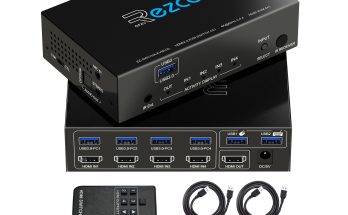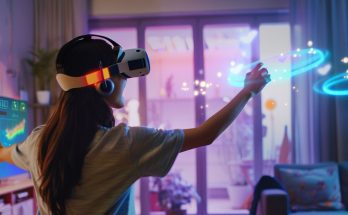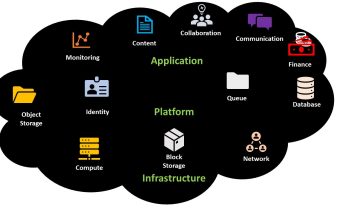JAKARTA, cssmayo.com – Artificial Intelligence: Transforming the Future of Learning is more than just a trendy phrase we see popping up everywhere. I’ll be honest—when I first heard about AI in education, it felt like just another buzzword, destined to fade after a few cool headlines. Funny thing, though. Here I am, a few years later, totally geeking out over how this Techno is overhauling how we learn, teach, and stay curious. And trust me, I’ve made my share of mistakes hopping on this AI bandwagon. Let me take you through what’s actually working, what’s just hype, and how Artificial Intelligence: Transforming the Future of Learning is no longer a distant promise—it’s here, it’s real, and it’s crazily useful.
My Unfiltered Journey with Artificial Intelligence: Transforming the Future of Learning

I remember my first attempt to use AI tools for learning—yup, I messed up big time. I figured, “Hey, if AI is so smart, I can just feed it any kind of info, and it’ll spit out genius solutions.” Wrong. The output was bland, generic, sometimes completely off-topic.
Here’s the big lesson: AI has transformed from dull assistant to a must-have learning sidekick, but you still need to know how to work with it. It’s not about pressing a magic button. You really need to ask the right questions and give it good context. That’s when I saw the real magic—personalized feedback, deeper explanations, and even creative brainstorming ideas. AI, especially when fused with Techno, brings out the best learning results when you actually collaborate with it like a partner.
Why Artificial Intelligence: Transforming the Future of Learning Really Matters—The Real World Scoop
Numbers don’t lie. According to McKinsey, nearly 60% of schools in Southeast Asia have started integrating some form of AI in lesson planning or student support. When I saw this in action at a coding bootcamp for teens in Jakarta, kids could learn at their own pace, get real-time hints from an AI chatbot, and—get this—create projects that solved community problems. I remember chatting with Indra, a high school student who used an AI-powered app to strengthen his math skills. He told me, “Mas, every time I get stuck, the app knows exactly where my weak spot is.” That blew my mind. Personalized, contextual help. Not just a boring PDF lecture.
If you’re a teacher, AI can reduce hours grading multiple-choice tests (huge relief, right?). For students, Artificial Intelligence: Transforming the Future of Learning means they get instant feedback, not two weeks later when the topic’s already forgotten. I mean, if you’ve ever felt lost in class, AI’s adaptive quizzes and customized content really fill that gap.
Common Mistakes: My Not-So-Perfect Experiences
Let’s get real. My first few times with AI educational tools? Disaster. I relied too much on the tool, thinking I could just passively absorb knowledge. But learning, just like with any good Techno, demands effort. If you feed vague questions to AI, don’t expect mind-blowing insights.
I also used to think every single learning app with AI in the name was the next big thing. Now I know—pick tools that actually adapt to your style. I’ve had the best results with platforms that give actionable feedback and explain the “why” behind mistakes, not just mark answers wrong. Lesson learned: don’t let the word AI in the marketing fool you. Try, fail, adjust. That’s how you really benefit from Artificial Intelligence: Transforming the Future of Learning.
How AI Tools Make Learning More Practical (Some Real Examples)
You want tips? Here’s what’s actually worked for me. First, using adaptive learning platforms—Duolingo for languages, Khan Academy for math, and even quiz apps powered by AI. These platforms analyze my progress and throw tougher or easier questions based on how I’m doing. It keeps things challenging but never overwhelming.
For research, I use AI-based summarizers to speed up reading. I tried using AI essay editors, too, but quickly learned—they’re best for grammar and structure, not originality. Don’t expect AI to write your next Pulitzer-winning essay from scratch (I learned that the hard way).
One more: If you’re into visual learning, try AI note organizers that convert class notes into visual mind maps. Super handy for brainstorming or reviewing before exams. AI voice assistants are fun for practicing pronunciation in new languages, too.
Personal Hypotheses—What’s Next for Artificial Intelligence: Transforming the Future of Learning?
So, is AI going to replace teachers? No way. My gut (and the data) say it’s here to amplify, not replace. The “human touch”—like understanding emotions, personal stories, or creating safe spaces for mistakes—can’t be fully coded yet.
Here’s my hunch: The future belongs to those who treat AI and Techno as creative partners. I see teachers evolving from info-givers to mentors who use AI to spot where students struggle early, sending nudges, or suggesting projects built around their interests.
Students? Well, you guys must learn to ask the right questions, not just memorize answers. That’s a skill robots can’t teach you. Artificial Intelligence: Transforming the Future of Learning makes it easier to follow your curiosity, explore deep topics, and prep for tomorrow’s jobs—which, let’s be real, don’t even exist yet.
Tips If You’re Just Getting Started with AI in Learning
Here’s what I wish I’d known from day one:
1. Start small—pick just one AI-powered tool (maybe a quiz or note organizer) and get familiar with it before trying others.
2. Don’t ignore privacy settings—make sure the AI platform protects your data.
3. Use AI for feedback, but do your own critical thinking. If something feels off, trust your gut and double-check.
4. Pair up with friends—testing new AI features with a buddy keeps things fun and helps you spot bugs or cool tricks faster.
And seriously, stay curious. Artificial Intelligence: Transforming the Future of Learning is only as good as the questions you dare to ask it.
Final Thoughts—How Artificial Intelligence: Transforming the Future of Learning Actually Helped Me (And Can Help You)
If there’s one thing I’ve learned, it’s this: embracing AI in your learning journey isn’t about becoming a robot, but about unlocking new ways to dive deeper, faster, and more creatively.
I’ve made a ton of mistakes (and had some big wins) using AI for personal growth, work, and lifelong learning. It’s not about perfection but about progress—and being open to new ways of thinking.
The next time someone says, “Oh, AI is just another passing fad,” just smile. For me—and maybe for you, too—Artificial Intelligence: Transforming the Future of Learning has genuinely made education more personal, exciting, and, honestly, a whole lot more real.
Elevate Your Competence: Uncover Our Insights on Techno
Read Our Most Recent Article About Cloud Security!




